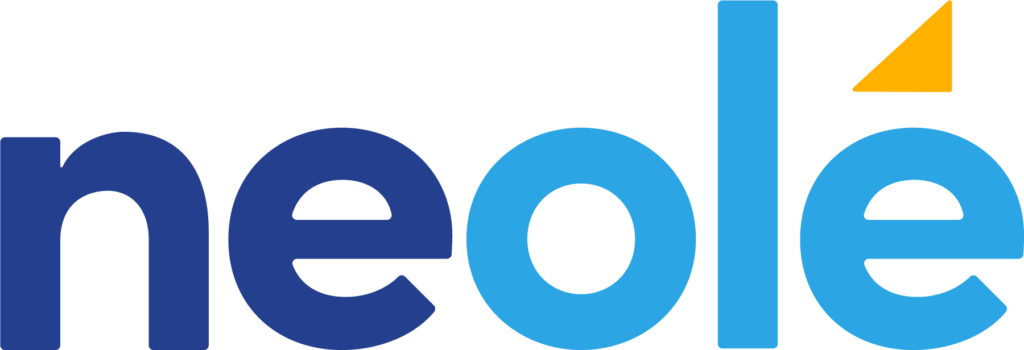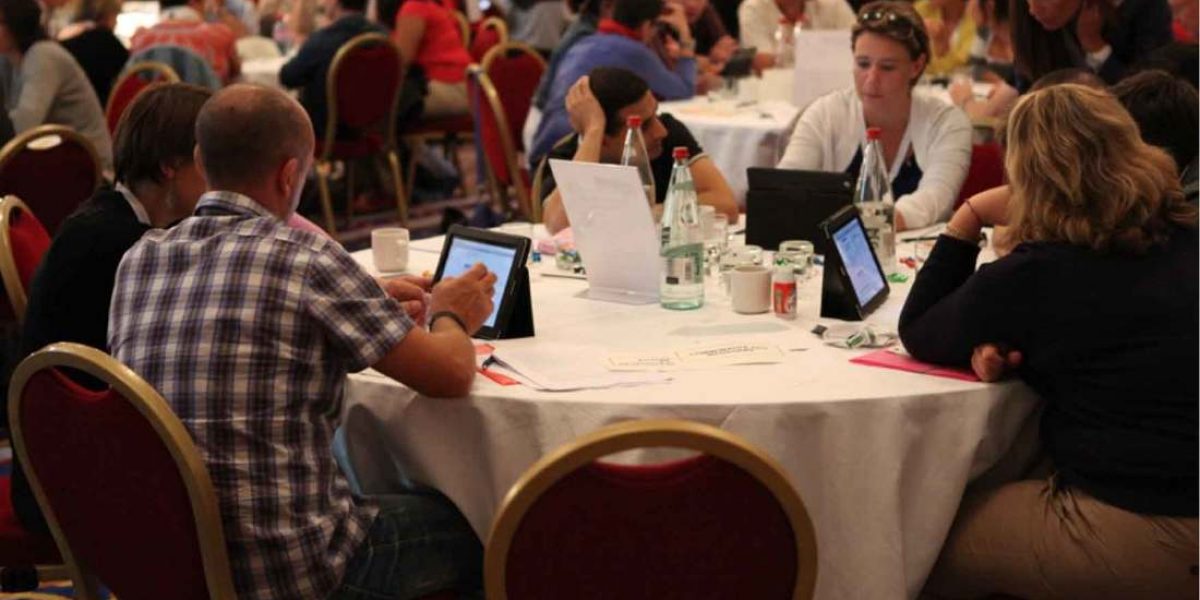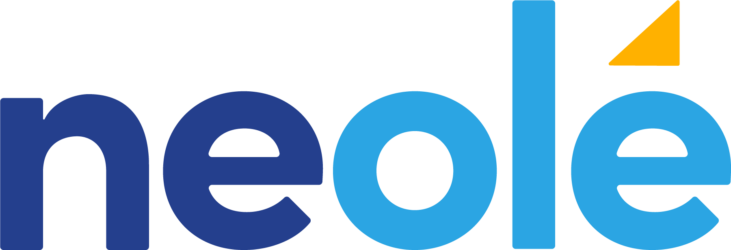Imagine a man speaking with a loud and excited voice while facing an enormous concave rock. From up close he appears to be speaking to the rock, but as you zoom out, you see a sizeable crowd behind him, listening to his speech. He is using the rock to produce a loud-speaker effect so that everyone in the audience can hear his voice. This might have been the very first innovation in public speaking.
When a rock was unavailable, the most common method of making important announcements was a relay. The speaker would utter sentences one at a time, leaving lengthy pauses in between. This would give people at the front of the crowd time to repeat what they had heard to those behind them and for the message to be passed along in a simple but effective relay system.
Today we have countless tools that allow us to share information, not only unidirectionally but to engage large numbers of people in debate, polls, opinionating, brainstorming, and the like.
And yet, most meetings and conferences continue to rely primarily on PowerPoint slides and a couple of microphones.
I recently attended a company conference in Toronto. The company (which must not be named) claimed to be innovative, and yet, they had 200 participants seated in rows, watching two hours straight of pure PowerPoint presentations.
Talk about “death by PowerPoint!”
The majority of attendees were completely disengaged, many of them guiltily peeking at their smartphones in an attempt to make better use of their time without appearing to be disrespectful to the presenters. I can imagine the internal conflict those attendees experienced:
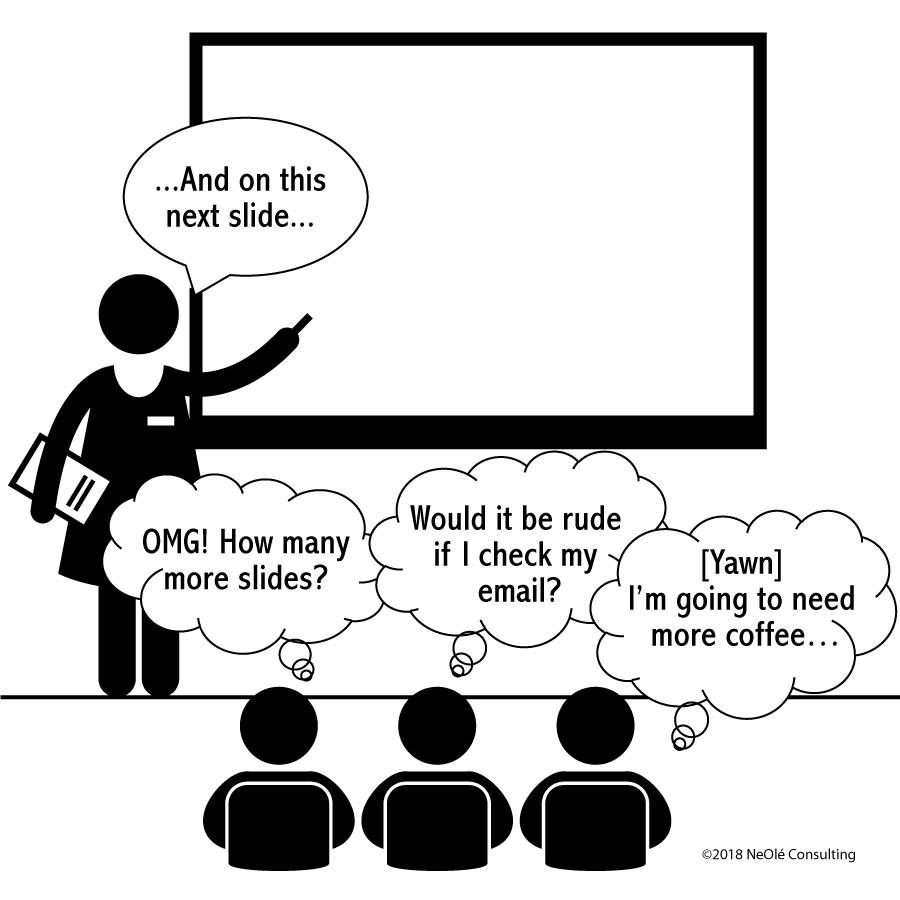
“OMG! How many more slides are there? Would it be rude if I check my email? I’m so glad I sat behind the boss. She won’t notice if I peek at my phone. I’m sure I’ll get all the slide decks and can review the data when I’m more focused. What’s wrong with me? Maybe I just need another coffee…”
There’s nothing wrong with the meeting attendees.
What’s wrong is how we engage with them (or not). The experts—those seated at the front, in control of the podium— used to be the only ones with information, experience, insights, unique opinions or something to contribute to the conversation. Hence, information was passed down to meeting attendees in a unidirectional manner. Now, we recognize that everyone in the room is an expert, with information, experience, insights, and unique opinions to contribute. And companies that don’t find out what their meeting attendees know or think are missing a huge opportunity.
Thankfully we have the technology that allows us to engage everyone in the conversation.
Using technology in meetings doesn’t mean giving each person an app to use on their smartphone, an encouragement to “tweet,” or a polling remote control. That’s a start, but there is so much more that can be done to engage meeting attendees.
Instead, the most engaging and collaborative meetings, whether they include 8 or 800 people, can look something like this:
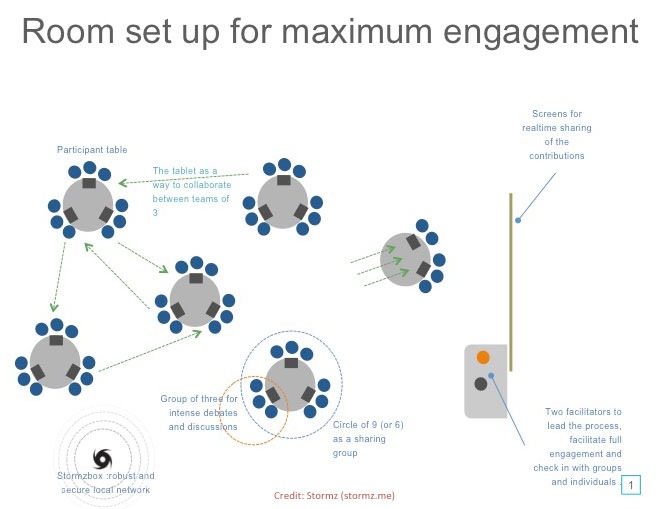
Imagine sitting in small groups of three, each group supplied with a tablet to input data, having engaging conversations with your fellow group members.
One person in your triad adds a “card” into the tablet for every key point, idea, or conclusion that is shared in your group.
After 15 minutes or so, the facilitator in the room displays all the “cards” on your screen. Each card represents a key point, idea or conclusion contributed by people outside of your group. Everyone in your group can now see all the cards that have been created by the other small groups at the meeting, and all the other groups can see your cards. Your group is thrilled to review what others have contributed. You vote on the contributions that seem most important to your triad.
Your triad then joins with the triad that is sitting across the table. Together, the six of you discover which ideas got the most votes and you share your reactions to the results with the rest of the room.
All of this takes place after a speaker has shared an update, inspirational story, or example that feeds into the collaborative.
What you just imagined above is not only one possible, but is an example of the many meetings that NeOlé designs and facilitates for our clients.
Whether you need to do strategic planning, an ideation session, collaborative decision-making or action planning, a networking session or a budgeting meeting, we use technology in combination with participatory facilitation techniques to get and give the most value to participants as well as the meeting organizers.
The above scenario can also take place using video conferencing with attendees participating remotely from different locations around the world. Alternatively, you can integrate remote attendees with your “live” in-person meeting via technology that facilitates their involvement and input.
Traditional meetings that transmit information from the experts to the audience might never go away entirely. But the next time you need to plan a meeting, ask “How might we achieve the most value from getting everyone together?”
Throwing technology at the issue might seem like the answer, but make sure it’s the right technology to allow for the greatest contribution of each person at the table. Contact us to find out how.
By Ginny Santos, Founder, Lead Facilitator and Collaborative Leader, NeOlé Consulting
